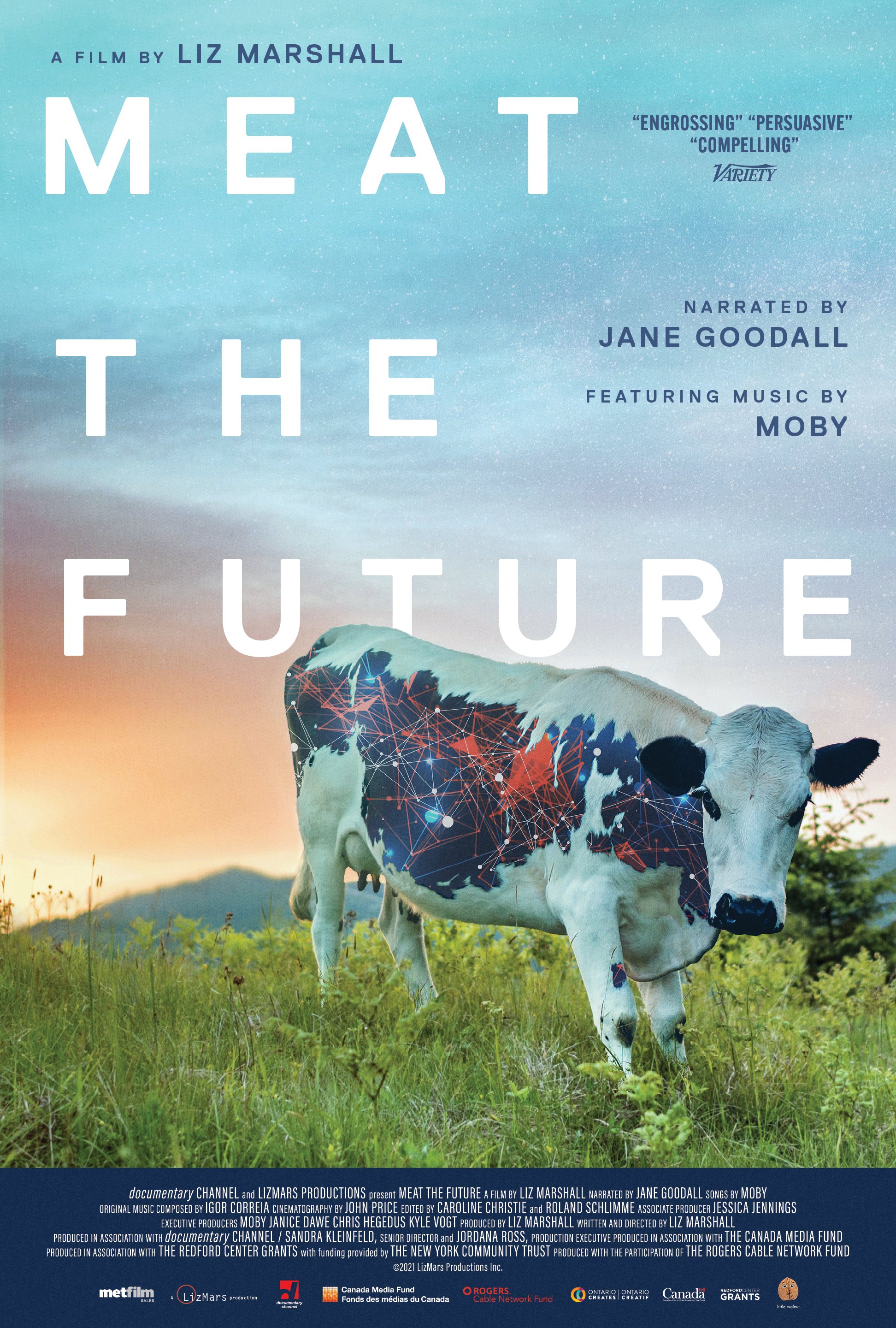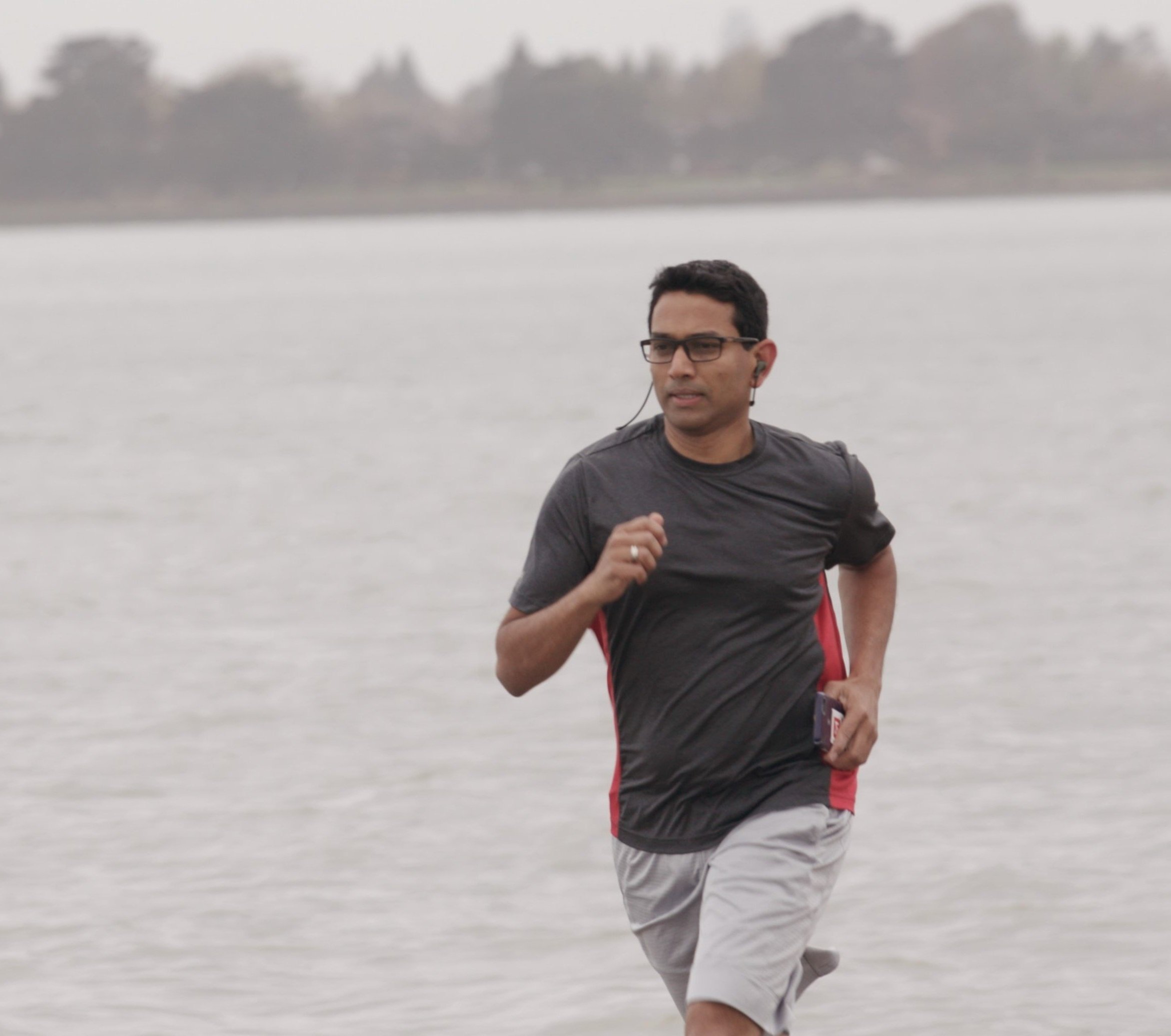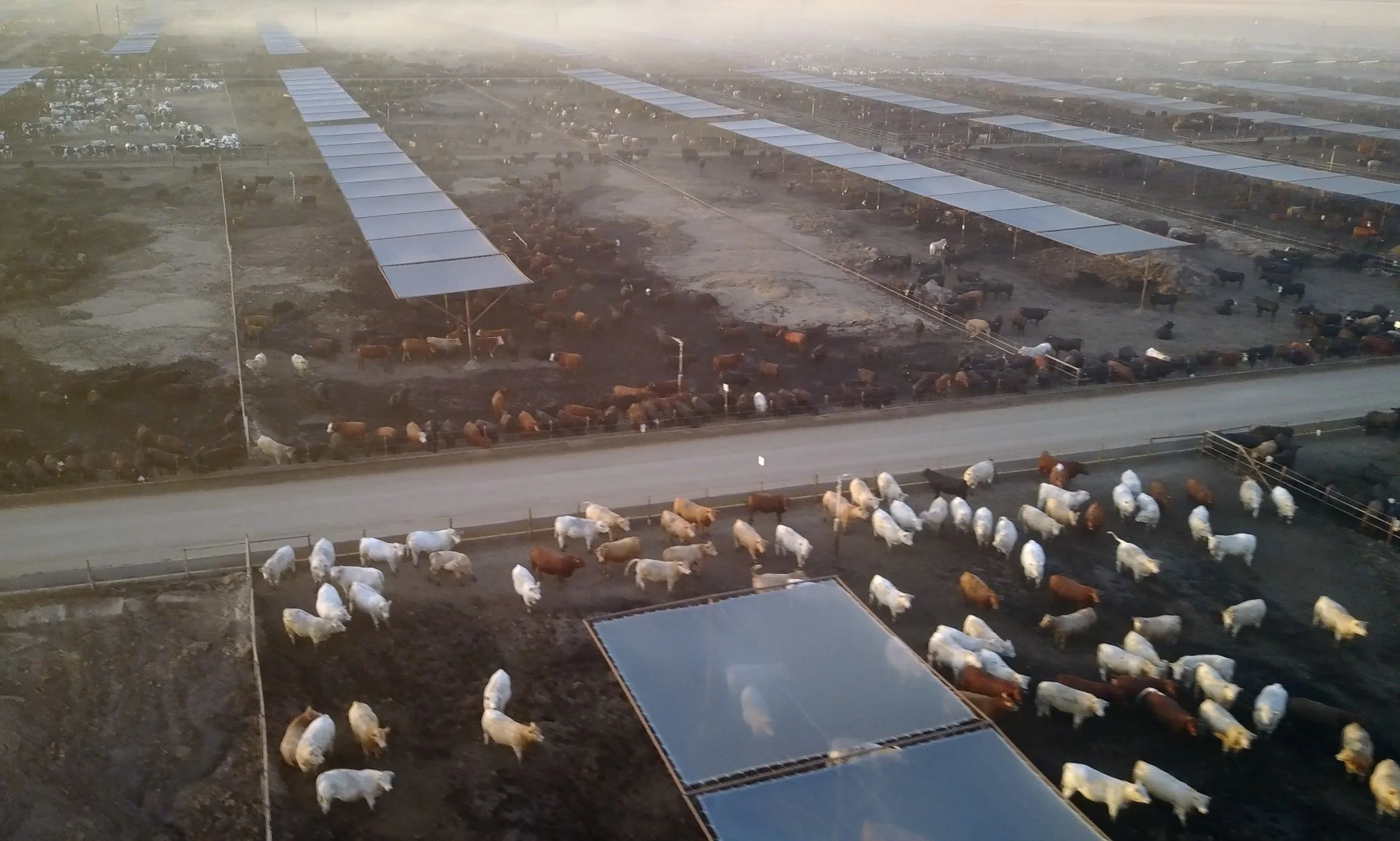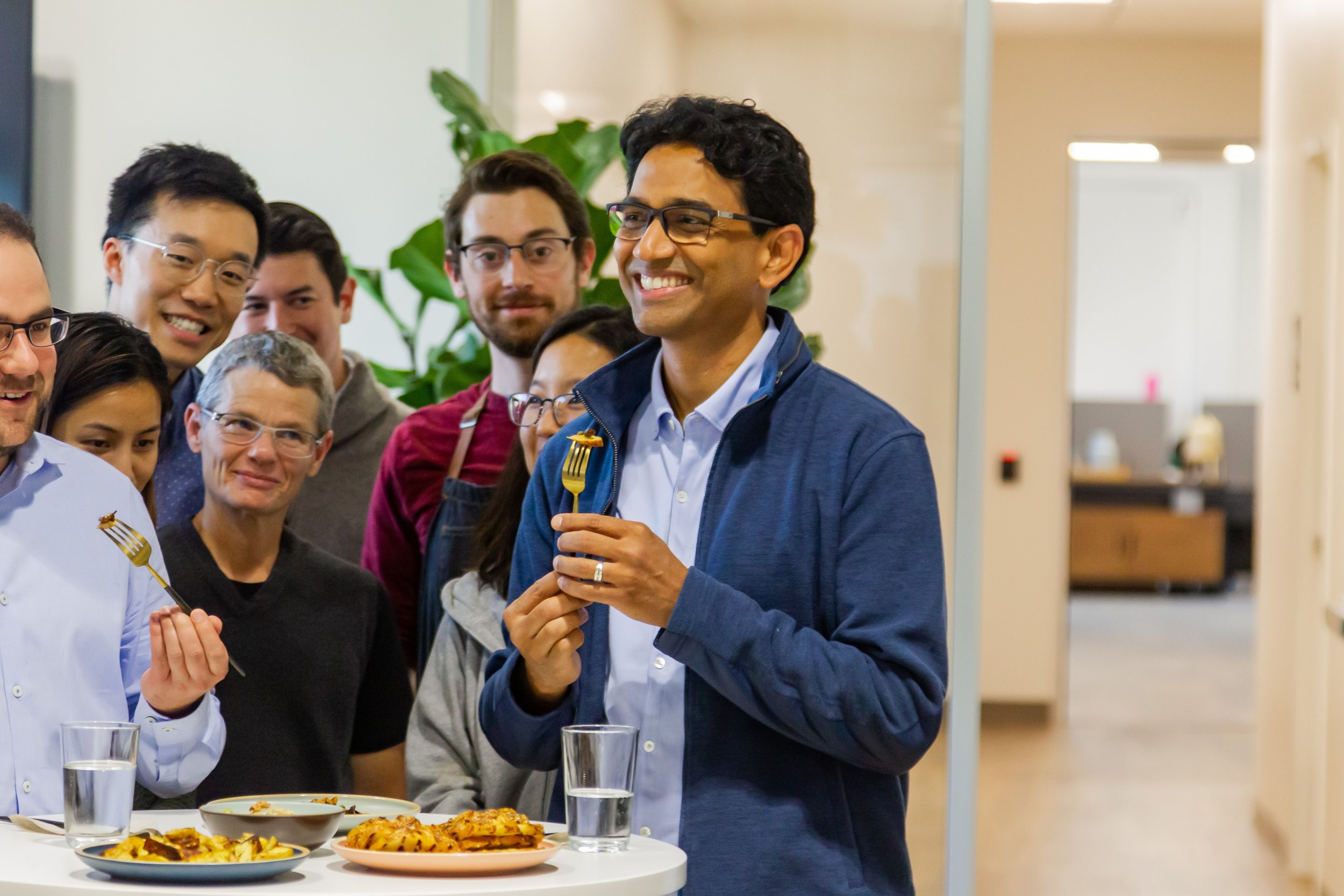“Meat the Future” written and directed by award-winning Canadian documentary film-maker Liz Marshall, offers a compelling inside look at a revolutionary new way to make food. Described as “one of the biggest ideas of the century” by Dr. Jane Goodall who narrates the film, Meat the Future humanizes what is a really big and, for some, scary idea of using technology to produce meat directly from animal cells using a bioreactor rather than an animal’s body.
Cultivated meat is a huge paradigm shift but with all of the negative ecological, climate and health impacts of industrialized animal agriculture — and meat consumption projected to double globally by 2050 – cultivated meat offers a solution and hope for the future. And it’s much more likely to succeed because people are not being asked to give up eating meat.
To tell the story, the film traces the remarkable journey of Dr. Uma Valeti, from Mayo Clinic cardiologist to one of the leading cultivated meat pioneers, as co-founder and CEO of Upside Foods (formerly Memphis Meats). By replacing the raising and slaughtering of animals, cultivated meat offers to transform the global food system, revolutionize agriculture, tackle the climate crisis and radically improve the environmental health of the planet.
But it’s Uma Valeti’s passion, his willingness to take risks to unleash the massive and multiple benefits of growing meat in a bioreactor, that lie at the heart of the film — the world's first and only feature-length documentary about the birth of the cultivated meat industry.
In an interview with Liz Marshall, PFN asked her about the importance of this revolution in food systems and about making the film.
Why were you attracted to this story?
When I first heard about the little meatball [from Memphis Meats] that could change the world, the light bulb went on for me right away. It was great to be there at ground zero, at the genesis stage of something that could really change the food system, how we think about food and of course potentially address the devastating issues that we care about, the climate crisis, human health and animal suffering.
Tell us about Uma Valeti, the central character of the film.
He is interesting because he is a visionary yet grounded, is so determined, morally motivated and he takes enormous risks. He has an interesting life trajectory, raised in India, becoming a successful cardiologist at the Mayo Clinic and then pivoting to start this big idea. He took a big risk.
When you began filming, did you realize you were capturing something really significant?
We were really a witness to something being born, the birthing of an industry. It was exciting, unique and important. We were on the ground, in the room and witnessing these moments, we were behind the scenes of something that has never been done before. We were filming a piece of history.
Why do you choose storytelling rather than just presenting the facts and figures about a major issue?
I use a character-driven approach, anchoring a human journey within a story. The central character needs to be relatable. You have to have an emotional component, you can’t just have information being thrown at you, although some documentaries are very effective with that approach, that’s just not how I tell stories.
While filming, what did you encounter that you didn’t expect?
We live in a very complex economic system and to make real systemic change work you have to work with the big players. So one of the biggest surprises, one of the biggest twists in the story, was in 2017 when it was announced that [giant meat companies] Cargill and then Tyson were signing up as investors.
That was a ‘wow’ moment that raised lots of questions and makes people think. Documentaries are meant to foster dialogue, make people think and see the world in new ways.
Cooking up some cultivated meat. Left: Liz Marshall. Right: Uma Valeti.
Given that the big meat companies, who many see as synonymous with the problems of the current food system, are investing in this new industry, is this a welcome development?
The only way [to drive major change] is an inclusive approach. The food conglomerates reach everywhere. The strategic path taken by Upside Foods is to be part of that food system rather than trying to be a disruptor on the side, that may or may not go anywhere. The film is obviously about disruption but it’s more about transformation. Transformation is a bigger word, it’s more meta, it’s about a paradigm shift.
The topic of cultivated meat generates a visceral response in some people. Is resistance to the idea driven by fear — of change, of technology — especially from those who produce meat in the conventional way?
Yes, that is the crux of the matter. There is such a hard divide between those who want to see progress and change and those who hold firmly to their traditional conventional belief systems.
So did that influence how you engaged the audience in the story?
I’m not the kind of film-maker who wants to manipulate people. I don’t want to sugarcoat things, I want to present the truth. Because this film has a solution focus, we had to show the problem. The problem is industrial agriculture, how we treat animals, the whole thing.
So, the great challenge was how do we represent that in the film in a way that is truth telling and at the same time people won’t turn the channel. I think we did create that balance [judging] by the feedback.
What do you think of the scale and speed of the change in this new industry — both while you were filming — and since it was completed?
By all accounts it is unprecedented. When we began filming, it was the very beginning of this big idea. There are now more than 100 cultivated meat start-up companies globally.
Part of the story in the film is about the challenge of lowering the cost of producing cultivated meat. Why is this important?
To succeed it cannot be an expensive niche product for affluent people. The goal of the company is [to price cultivated meat] on par with or less expensive than conventionally produced meat. It has to be accessible and food justice needs to be part of this as well.
Will the cultivated meat industry succeed, will it replace the conventional meat industry, and if so, when?
We will see a major continued transformation of this industry in our lifetime. We are at the 11th hour, it’s an emergency. This must happen, whether it’s plant-based, regenerative or cultivated meat, those are the solutions.
The current state of large scale animal agriculture — that uses 50% of our land, is responsible for huge swaths of deforestation, greenhouse gas emissions, water pollution and slaughters 70-100 billion land animals every year — is unsustainable. It’s inhumane and archaic.
So I think that what we are seeing here is the groundswell of something that is moving in a new direction, a different direction and these big meat companies recognize the bottom line. They are investing in this new industry.
What is your outlook for the future given the challenges we face on this planet?
We need hope and beauty and questions. I am a pragmatic idealist. We need to have faith that things are changing and moving forward, and at the same time we need to be grounded in the reality of where we are.
You can watch Meat the Future on CBC Gem (Canada), Apple TV, and the Documentary Channel. Click Meat the Future to see where you can watch the film.
All images courtesy of meatthefuture.com









